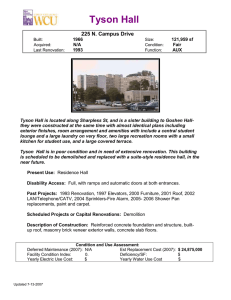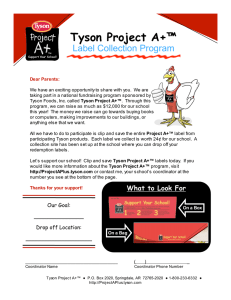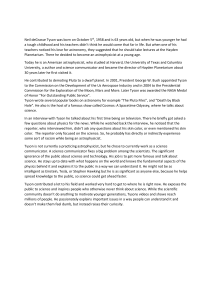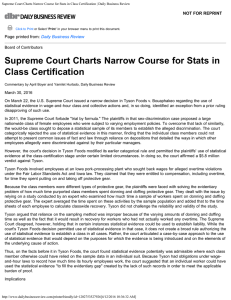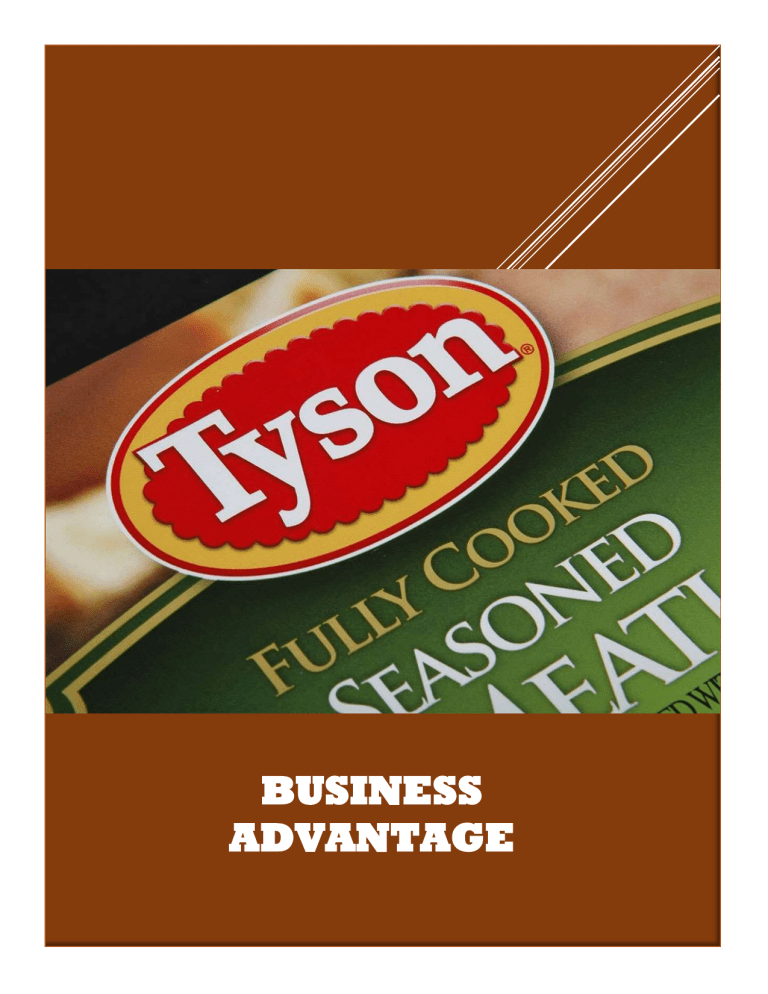
BUSINESS ADVANTAGE Contents Overview of Company ................................................................................................................................ 2 Discussion of Management Theories ......................................................................................................... 2 Bureaucratic Management Theory ....................................................................................................... 3 Maslow’s hierarchy Theory ................................................................................................................... 3 Financial Intermediaries in Competition .................................................................................................. 5 HRM approach............................................................................................................................................ 6 Competitive advantage ............................................................................................................................... 7 References .................................................................................................................................................... 9 Overview of Company Tyson Foods is the world's second-largest poultry, hog, and beef-processing company with its headquarters in the United States. In addition to its well-known brands like Jimmy Dean or Hillshire Farm, the company is known for its cooked foods and unprocessed meats sold in supermarkets. There are more than 130 nations where the corporation sells its products and services. The 123 food processing plants owned and operated by Tyson Foods in the United States are the biggest annual exporter of meat from the United States. More than 100,000 people work at Tyson, the largest meat supplier in the United States, which had total profits of $43.2 billion for the 2020 fiscal year, an increase of about 2 percent from the previous year (Fortune, 2020). Tyson Foods Inc's overall revenue grew by 23.64 percent, resulting in an approximate 11.77 percent market share. (Fig. 1.) Over the next two years, the corporation plans to open a total of 12 additional factories, increasing capacity by 1.3 billion pounds. Through the end of the fiscal year 2024, it hopes to have a value-added volume of 50% of its total volume (Tysonfoods, 2019). Figure, 1: (Fortune, 2020). Discussion of Management Theories Organizational structure, leadership, and corporate culture all fall within the purview of management, which encompasses a wide range of topics. Companies at all levels are impacted by this domain, which may easily determine whether a business will keep rising. The way a company is run determines its course and the techniques it will use to get an advantage over the competition. Companies that are well-managed are capable of thriving in the most challenging situations. The ideal situation may not even be able to aid it if it is badly handled. Tyson Foods is diversified throughout all key distribution channels as well as product kinds and locations of both production and distribution. the sole provider of chicken, beef, or pork across all key distribution channels, including consumer goods, foodservice, and overseas (Inc, 2020). Bureaucratic Management Theory Hierarchy, job specialisation, division of labor, formal practices and regulations, equality, and recruitment based on merit are all examples of bureaucratic concepts. A structure like this was essential in huge enterprises, according to Max Weber's bureaucratic theory, for structurally completing all activities by a large number of personnel. Additionally, in a bureaucratic system, only technical qualifications are used for selection and promotion. For the purpose of eradicating harmful practises and situations, Tyson Foods maintains communication throughout all levels of the firm. Team members that work hourly are critical to the success of this project. A "span of control" effort is being implemented across all business divisions to increase safety, retention, and performance by recruiting additional production supervisors. Additionally, Tyson Foods' recruitment initiatives strive to establish a diverse workforce that reflects the example of market they serve. To achieve this goal, they actively participate in military, LGBTQ, college, and other diversity recruitment programmes (Mulder, 2018). Maslow’s hierarchy Theory Tyson cares about the individual requirements of its workers and how that affects their performance. Human behaviour is explained by the premise that people strive to meet their basic physiological demands (such as food) as well as more sophisticated physiological needs (such as their own sense of worth) (Figure, 2). There is no evidence to support Maslow's idea of the hierarchy of wants; rather, he found that employees were less motivated when a need was met. Suppose an individual with an unsatisfied desire could be convinced to put in the time and effort needed to fulfil that desire. Self-Actualization A goal is at the heart of all they do, and all of their actions are designed to achieve that goal. Tyson is now offering health and wellness benefits to its employees. The average hourly income has risen to $24, from $22 in August, and full health insurance, retirement benefits, and sick pay are now available to workers (Jackson, 2018). Social needs Tyson places a high value on making a positive effect in the place where their employees live and work. For this, they focus on where they can make the most effect from a business and social standpoint by taking use of their unique assets and maximising influence. Esteem Needs Tyson recognises that mental health difficulties affect all part of a person's life, including their profession, relationships, and even their physical health. Safety Culture To achieve these objectives, Tyson cultivates a plant-based safety culture and care. In order to decide which departments in a plant should be targeted for process improvement, they conduct an evaluation of the most unstable areas of the plant. Due to these strategies, Tyson Foods has become a sought-after employer in several labour markets and has seen an increase in performance across a variety of industry benchmarks (Jackson, 2018). Psychological needs They also know that a company's capacity to compete in a complicated and ever-changing commercial world, attract, engage, and retain employees, all depend on its workforce's mental health (Tyson sustainability, 2020). Figure, 2: (Jackson, 2018). Financial Intermediaries in Competition Partner with World Resources Tyson became a member of the World resources research Firm, Researchers have partnered with the Tyson Foods Center for Efficient Poultry meat Research, announced a global forestry sector standard in response to the risk of deforestation, and achieved a 7.7% decrease in water use compared to a baseline year in partnership with the World Resources research Institute to measure the water risks and create a water stewardship strategy (Tyson foods, 2021). In addition, the Board of Directors established a Governance and Nomination Committee to oversee sustainability governance and monitoring. It advises the Board on issues related to business sustainability, including issues relating to the Company's environmental, social, and governance impacts. This committee is also responsible for overseeing and reviewing the company's core programmes and integrating sustainability concepts into its company strategy and decision-making at least once a year. Financial Roles and Operations Despite its size, Tyson Food is not resistant to pressures from competitors or factors outside its control. New competitors in the market have put the company at a disadvantage, resulting in a minor loss of market share. In order to deal with these problems, Tyson Foods must develop an internal feedback process that comes directly from its field sales crew. The way financial planning is currently carried out is inefficient and inept. According to the company's financial statements, the corporation has the ability to utilise its cash in a more efficient manner. Tyson Foods has a greater staff attrition rate than its competitors, and as a result, it must spend significantly more money on employee training and development than its competitors (Tyson foods, 2021). Partner with Non-Profit Organisations The amount of money spent on R&D is significantly lower than that of the industry's fastestgrowing companies. In an effort to better the lives of people living in Tyson communities, Tyson Foods is looking for proposals from nonprofit organisations that are registered with the Internal Revenue Service (IRS). Within 20 kilometers of a Tyson Food production facility, the most attractive proposals offer programmes that have clearly defined outcomes and that indicate how Tyson Foods' staff can be involved. Funding Organizations that match with Tyson Foods' core principles are encouraged to submit sponsorship proposals that allow the company to have a significant and visible role in the community. It is necessary to submit proposals at least 90 days before the planned start of any advertising or promotion (Washington, 2018). HRM approach Tyson Food Human resources has a direct effect on the company's overall culture, which employees rate C+. As Tyson Foods acquires new firms and expands its operations, preserving a culture that represents its core values is a constant challenge. Tyson can't operate without the support of their employees. All employees have access to open and honest communication with their bosses, ensuring that everyone is on the same page. The majority of their workforce is daily and works in the United States poultry, beef, pork, and prepared food factories. Salary-paying members of the U.S. team mainly support plant management and corporate roles. Employees at Tyson can take use of a variety of benefits and training programmes designed to help them succeed in the job, at home, and in other aspects of their lives. They use three recurring workplace objectives, which are reassessed each year, to track their progress in implementing these efforts. Health, life, dental, vision, and prescription medication benefits are available to all Tyson employees and their families at an affordable cost. All regular full-time employees who have worked for the company for at least 59 days must be covered by a company-sponsored or family member-sponsored health plan. As a result, all of the team's eligible members have health insurance (Tyson foods, 2021). Employees are qualified to enroll in a retirement income programme, an employee stock ownership programme, short and the long disability coverage, educational help, and paid vacation and holiday time. Employees and their insured dependents are encouraged to participate in activities that will help them improve their health. They use services and assistance programmes to come up with unique solutions to this problem. As a result of these efforts and other segment communication received (telemedicine, biometric checks, etc.), the ER utilisation rate has been reduced by a significant amount. Competitive advantage Tyson Foods Inc. has a competitive edge because of its scale and brand identity. As previously stated, Tyson has a significant advantage over its competitors because of its large market share. The reality that Tyson provides meat to well-known fast-food chains like McDonald's and KFC ensures a steady stream of revenue for the meatpacker. Tyson's capacity to compete inside the food market has been bolstered by its brand equity. There is a lot of competition in the business category, as well as a lot of regulation to deal with. The commodities segment's cheap switching costs and a fairly homogenous product result in minimal consumer loyalty despite the industry's reality of corporate consolidation, with a few big companies generally holding more than 50 % of the market in various sub-segments (MASTER IN FINANCE, 2019). Companies in the branding and valuation market are increasingly being threatened by specialist manufacturers and replacements. Concentration of distribution networks, with a few purchasers representing large customer accounts, is the standard in both areas. Every segment in which Tyson Foods operates is a major player: Beef and Chicken; Chicken and Preparation. Each of Tyson's business units has a list of the company's most significant competitors (Figure, 3). Tyson Foods' business strategy is a long-term competitive advantage because of the wide range of products and innovations it offers, which lead to customer delight. Tyson's exclusive concentration on protein is another key asset that gives them an advantage in the market. They've gotten rid of their non-protein ventures and are solely focused on the protein industry from here on out. Tyson Foods is putting $150 million into a food innovation fund in order to produce more protein-based products (MASTER IN FINANCE, 2019). Entrepreneurs who are working to improve current food systems will be a part of the company's collaborations. As a result of these qualities, they believe that they can help companies expand faster through their interactions with customers as well as their ability to do food and gourmet research and development. Because of this, they intend to have a significant impact on both domestic and global food security. Figure, 3: (MASTER IN FINANCE, 2019). References Fortune. (2020). Tyson Foods Company Profile. [online] Available at: https://fortune.com/company/tyson-foods/. Inc, T.F. (2020). Tyson Foods Uniquely Positioned to Meet Global Protein Demand. [online] GlobeNewswire News Room. Available at: https://www.globenewswire.com/news- release/2020/02/19/1987418/7106/en/Tyson-Foods-Uniquely-Positioned-to-Meet-GlobalProtein-Demand.html#:~:text=Tyson%20Foods [Accessed 4 Apr. 2022]. Jackson, K. (2018). Championing Mental Health with Our Employee Assistance Program. [online] Tyson Foods. Available at: https://thefeed.blog/2018/10/08/championing-mental-health-with-ouremployee-assistance-program/. Mulder, P. (2018). Bureaucratic Theory definition by Max Weber | ToolsHero. [online] ToolsHero. Available at: https://www.toolshero.com/management/bureaucratic-theory-weber/. Tysonfoods.com. (2019). Welcome To Tyson Foods. [online] Available at: https://www.tysonfoods.com/. Tysonsustainability. (2020). People: Employees – Engagement & Retention | Tyson ESG Hub. [online] Available at: https://www.tysonsustainability.com/people/employees/engagement-andretention. Tysonfoods. (2021). Corporate Giving. [online] Available at: https://www.tysonfoods.com/whowe-are/giving-back/corporate-giving. Washington, D. (2018). UNITED STATES SECURITIES AND EXCHANGE COMMISSION. [online] Available at: https://s22.q4cdn.com/104708849/files/doc_financials/2021/q4/TSN-202110K-DRAFT-11.12.21.pdf. MASTER IN FINANCE. (2019). A question of delivery Testing the limits of growth. [online] Available at: https://run.unl.pt/bitstream/10362/68757/1/Brander_2019.pdf.
